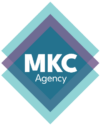Unlocking the secrets of a winning sales targeting strategy can elevate your business to new heights. Let’s dive in and discover what makes it tick!
Understanding Your Target Market
Grasping the nuances of your target market is the cornerstone of any effective sales targeting strategy. It involves digging deep into market research to identify not just who your customers are, but also understanding their pains, desires, and behavior patterns. This intel paves the way for tailored marketing efforts that resonate on a personal level.
A part of understanding your target market is recognizing the demographic and psychographic variables that define them. From age, location, and income level to values, interests, and lifestyle choices, each factor plays a pivotal role in shaping your strategy.
Surveys, focus groups, and customer feedback can be golden mines of insights into your target market. Engaging directly with your audience not only fortifies your data but also builds trust and loyalty, which are crucial for long-term relationships.
Identifying Your Unique Selling Proposition (USP)
In a sea of competitors, your Unique Selling Proposition (USP) is your lighthouse. It’s what distinguishes you from the rest and attracts customers to your shore. Identifying and communicating your USP clearly can dramatically improve your sales targeting strategy by appealing directly to the needs and wants of your target audience.
Your USP could range from product features, customer service excellence, to pricing strategies. Understanding and leveraging this unique trait requires you to not only look inward at your strengths but also outward, by keeping an eye on the competition.
Leveraging Data for Effective Targeting
The power of data in sales targeting cannot be overstated. Today’s technological advancements provide businesses with unprecedented access to data that can pinpoint potential customers more accurately than ever before.
Using CRM tools, analytical software, and even social media insights, businesses can gather, analyze, and apply data to refine their targeting strategies. This could mean identifying patterns in customer behavior, tracking the customer’s journey, or segmenting the market more effectively.
Remember, the goal is to turn data into actionable insights. This might involve A/B testing different approaches or using predictive analytics to forecast future trends and behaviors.
Setting Clear and Measurable Goals
Clear, measurable goals give direction to your sales targeting strategy. Whether you’re aiming to increase revenue, boost customer acquisition rates, or improve retention, having defined metrics helps track progress and success.
SMART goals—Specific, Measurable, Achievable, Relevant, and Time-bound—can guide your strategy and provide focus for your team. These objectives should align with your overarching business goals and be regularly reviewed and adjusted as necessary.
Choosing the Right Sales Channels
Not all sales channels are created equal, and choosing the right ones is key to reaching your target market effectively. This decision should be informed by where your customers spend their time and how they prefer to make purchases.
Digital channels like email, social media, and your website might be central to reaching a younger, tech-savvy audience, while more traditional methods like direct mail or in-person sales might better suit others.
Crafting Personalized Outreach Messages
In today’s market, personalization is not just preferred; it’s expected. Crafting personalized outreach messages that speak directly to the needs and interests of your target market can significantly improve engagement and response rates.
This involves more than just using a customer’s name in an email. It’s about tailoring the message, offer, and timing to match the customer’s buying journey and preferences, creating a sense of value and relevance.
Analyzing and Adjusting Your Strategy
A successful sales targeting strategy is not set in stone; it’s a dynamic process that requires continual analysis and adjustment. Market trends evolve, new competitors emerge, and customer behaviors change.
Regularly reviewing your sales metrics, customer feedback, and industry trends will help you stay ahead of the curve. Don’t be afraid to pivot your strategy if the data shows that a different approach could yield better results.
Sealing the Deal
Mastering these elements of a successful sales targeting strategy not only amplifies your sales efforts but aligns your team towards a common goal of growth and efficiency. It’s about knowing your market, leveraging your strengths, making data-driven decisions, setting achievable goals, choosing the right channels, personalizing your outreach, and continually refining your approach. Embrace these strategies, and watch your business soar.

